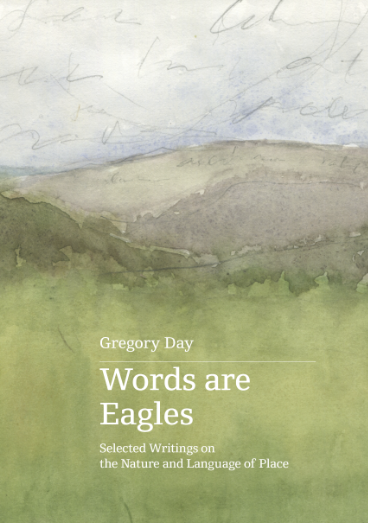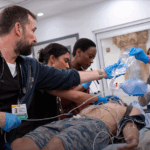Review: The Bell of the World, Gregory Day, Transit Lounge | Words are Eagles, Gregory Day, Upswell
It seems strange to praise a writer for paying close attention to language, but Gregory Day has an exquisite sense of the appropriateness of language and is interested in how language overlays place. This is a key to his fiction and non-fiction.
In Australia, the overlay of English place names is somewhat understandable, but it is a papering over and a narrowing of timescales. Although all human naming is something of an imposition, Indigenous names, on the other hand, alert us to history and help us see with fresh eyes. This is important for the original owners, but also for other, relative newcomers whose relationship is dynamic, who are, as Day says, not endemic but becoming so, but who now have an urgent need to come to terms with the landscape in a harmonious rather than controlling way.

Day’s particular neck of the woods is Western Victoria and the Otway ranges. He teaches the local Wadawurrung language at the local primary school. The Western District is where the action of his recent novel The Bell of the World takes place. His main protagonist, Sarah, has returned from England after some family troubles, and goes to stay with her well-travelled – both geographically and philosophically – uncle, Ferny, who runs a farming property. Set in the early years of the twentieth century, it tells of her recuperation and realisation that we need to look at the landscape anew. This is in the context of, in the years after Federation, a new ‘nationalist’ sentiment that was being laid over the bush, the beginnings of a move away from the majority of Australians thinking of Europe as ‘home’ and appreciating the Australian landscape for what it is. Sarah, helped by Ferny, begins to appreciate the hybrid nature of their experience.
The plot centres on, or, rather, revolves around a local argument, which is only hinted at, over whether the town should have a bell to ring out the hours. In England, Day tells us in Words are Eagles, ‘home’ meant proximity to the sound of the town bell, and some locals want this mark of Englishness in their Australian location. This is symbolic of the wider tension between the desire for ‘civilisation’ and the freedom of nature, a choice between the continuation of a transplanted and incongruous England and an embrace of antipodean difference.
The hybrid nature of the settler experience is echoed in Ferny’s love of the Australian classic ‘Such is Life’. He carries it with him, until it falls apart. He goes to see a bookbinder who surprises him with an unorthodox rebinding that creates something of a hybrid work of art, a postmodern chimera. This is, in turn, echoed by Sarah’s practice of playing a ‘prepared’ piano, prepared with objects from the bush. In all this, Day is exploring how art mutates in a new environment. Day writes that as a child he imagined European myths and novels in an Australian setting.
Day gets into the Edwardian era through his use of language, with its at-times baroque verbosity, showing how literary power can evoke time as well as place. Sentences lift into flights of poetry. They have the grace of a running passage of play with precision passes in football, or the fluidity of a technically challenging piano piece nailed. He has the precision of a craftsman. In The Bell of the World, to cite just one example of precise attention, he describes the sound of cartwheels over bridge planks as a paradiddle.

In Words are Eagles he notes the power of words to help us negotiate the landscape. He encourages us to learn the names of birds and soils. Stories occur unavoidably in place, so we need language appropriate to that place. This results in deeper understanding (which is doubly important when most people know more about celebrities than their local environment), as well as the joy of sparkling prose. It’s a pleasant surprise that a piece Day writes about the soil unearthed in a local roadworks project sings so.
For Indigenous people, understanding Indigenous names is a matter of sovereignty, but it is also beneficial for the non-Indigenous, helping unearth non-scientific connections of ritual and meaning. In discovering local names we pay attention to the land itself. But he also recognises that we approach landscape with other languages, that the written word is not the only way to tell stories. No wonder he is interested in Cezanne.
He writes about how Cezanne saw forensically and tried to find the right painterly language for his own patch of turf, even if this was a language he had to make up. In Australian painting history we can see those linked to the European tradition stretching the link thinner and thinner, in an attempt to capture the uniqueness of locality. In her prepared piano, Sarah does this too, not abandoning her heritage but realising it can’t speak honestly if it doesn’t mutate.
Nick Mattiske blogs on books at coburgreviewofbooks.wordpress.com and is the illustrator of Thoughts That Feel So Big.














